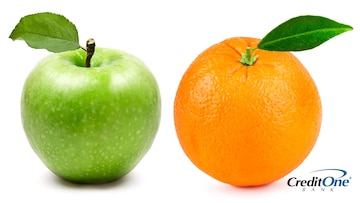January 01, 2021

Think there’s only one type of credit card? Think again. There’s a credit card out there for just about every kind of consumer with most any credit score.
We’re not just talking credit cards with different interest rates and fees. We’re talking credit cards that offer specialized perks—or don’t—and are designed to appeal to people from various demographics with a wide range of qualifications. So, if you’re considering getting a credit card, or an additional credit card, consider these seven types of cards before applying. They’re not the only types of credit cards out there, but they represent a good start if you’re making a list.
1. Standard Revolving Credit Card (No Frills)
What it is: A standard revolving credit card is just what it sounds like. It is a revolving credit card—as are nearly all credit cards—which means it grants you replenishing credit up to your credit line. So, for example, if you have a $500 credit line and a current balance of $300, you have $200 in available credit. Once you pay off the $300 balance, assuming you haven’t made any additional purchases and have not accrued any additional interest or fees, you should now have $500 in available credit.
This type of credit card doesn’t typically come with a lot of bells and whistles, other than it gives you purchasing power, provides consumer fraud protection, and can help you to build a payment history because most credit cards report your activity on the card to one or more of the three major credit bureaus. It may provide additional perks offered by other credit cards, but that really depends on the individual card.
You use this type of credit card the same way as most other credit cards: make purchases and then make at least the minimum payment due. You’ll accrue interest on any balance you don’t pay back in full—or on the entire balance if the card doesn’t have a grace period. The annual percentage rate (APR) and any fees you’ll pay also depend on the individual credit card and the card issuer’s terms and conditions.
Who it’s for: A standard no-frills revolving credit card can be for anyone, with any credit score, so long as they meet the card’s minimum qualifications. However, if you have a higher credit score, a steady income, and a positive payment history, you’re probably more likely to qualify for a credit card that offers more perks, like Card #2: a cash back rewards card.
2. Cash Back Rewards Credit Card
What it is: A cash back rewards credit card provides cash back rewards on eligible purchases made with the card. The reward is typically a stated percentage of the amount spent on eligible purchases. Which purchases are considered “eligible” to qualify for cash back rewards are established by the credit card issuer. One card issuer, for example, may reward cash back on only gas purchases made with their credit card while another may reward cash back on every single purchase made with their card.
So, for example, if you make an eligible purchase of $100 with a 1% cash back rewards credit card, you should earn $1 (1% of $100) in cash back rewards for that purchase. Cash back rewards are typically redeemed as a statement credit.
A cash back rewards credit card may or may not have an annual fee, again, depending on the credit card issuer.
Who it’s for: Because you’re getting cash back rewards on eligible purchases, cash back rewards cards typically require a higher credit score than a standard credit card. However, since cash back rewards have become ubiquitous in the credit card industry, to be competitive, it’s not unheard of for some subprime and even secured credit cards to offer cash back rewards.
3. Points or Mileage Rewards Credit Card
What it is: A points or mileage reward credit card works similarly to a cash back rewards credit card only instead of rewarding you with cash back in the form of a statement credit, you’ll earn points that are redeemable for products or services—or airline miles redeemable for airline travel or other products and services.
Let’s say you have a points credit card that earns you one point for every dollar spent on eligible purchases with the card. If you make an eligible purchase of $100 with the card, you’ll earn 100 points redeemable for products, services, gift cards, etc. The credit card issuer establishes which purchases qualify as “eligible,” what the reward options are, and how many points or miles they choose to reward for eligible purchases. Just like with a cash back rewards card, eligible purchases may fall under specific categories or may include anything purchased with the card.
Mileage rewards cards are similar to points cards only they reward airline miles instead of points. Just as airline miles earned in many frequent-flyer programs can sometimes be redeemed for rewards other than airline travel, most mileage credit cards offer alternative rewards as well.
Who it’s for: These types of rewards credit cards are typically for those with better credit and higher credit scores. Many of these cards are travel-themed, so they tend to attract travel enthusiasts looking to earn airline tickets, hotel stays, or other travel-related perks. But a points rewards credit card can really be geared for any specialized area or activity, even as specific as, say, a credit card that earns you points redeemable for amusement park visits.
Points and mileage rewards cards typically have an annual fee. If there is an annual fee, you, as a consumer, may want to figure out if any rewards you expect to earn will be worth the annual fee you’ll pay for the right to earn them.
4. Credit Card that Offers a Balance-Transfer
What it is: A balance-transfer credit card is a credit card that allows you to transfer balances from one or more other credit cards to that card, typically at a low- or no-interest rate on the balance transfer amount, usually for a specified timeframe. If you’re committed to paying down higher-interest credit card debt, a balance transfer card might be a good option for you.
There are several pros and cons associated with a balance transfer. The primary pro is that it could help you pay off other credit card debt at a lower interest rate, which could enable you to reduce or eliminate that debt quicker because you’re not paying as much in interest. One of the main cons is that the potentially lower interest rate on a balance-transfer rarely lasts forever. If you fail to pay off the entire balance transferred before the balance transfer rate term expires, any remaining balance could be subject to a higher APR. There may also be fees associated with transferring a balance and using a balance-transfer card.
Who it’s for: A balance-transfer credit card is primarily for someone looking to pay down existing credit card debt at a lower interest rate. You may need good credit to qualify for one of these cards. To figure out if a balance-transfer is worth your while, be sure to read all of the terms and conditions, including what, if any, fees may be charged by the card issuer.
5. Charge Card
What it is: A charge card is not technically a credit card. Think of it as a credit card that only extends you credit for up to one billing cycle. That’s because, with a charge card, you’re required to pay the entire outstanding balance each month by the payment due date. You are not allowed to make partial payments and carry a balance on the account. If you miss a payment or pay less than the total amount due, you will typically be charged a late fee and the card issuer may suspend your charging privileges or even close the account.
Unlike most credit cards, charge cards typically don’t have a preset spending limit, but that doesn’t mean you have unlimited spending capability. The amount you’ll be allowed to charge may be changed by the card issuer, depending on your payment history, income, and other factors. To minimize their risk of having no preset spending limit, most charge card issuers charge an annual fee.
Who it’s for: Charge cards generally cater to applicants with relatively good credit. If you don’t want a predetermined credit line and have good credit, a charge card may be a good choice for you. Charge cards may also be a viable option for many businesses. Fleet cards used by business, for example, are typically charge cards. American Express is the primary issuer of consumer charge cards in the U.S.
6. Retail Credit Card
What it is: A retail credit card—or store credit card—is a closed-loop credit card that can only be used with a particular retailer or group of retailers. It is not a general-use card, which means that, if you have a retail credit card for a specific home-improvement store, you cannot use that credit card to make purchases at your local grocery store. To make their credit cards more attractive, retailers may offer sign-up discounts or other exclusive discounts, rewards, or other perks.
Because retail cards typically have lower credit lines and can only be used with specific retailers or chains, they typically have less stringent approval criteria and tend to be easier to get than traditional open-loop credit cards that can be used with a wide variety of retailers. You may also pay higher interest rates with store credit cards than with traditional credit cards.
Who it’s for: Retail credit cards are available for consumers with a wide range of credit scores; however, if your credit score is not high enough to qualify for a traditional credit card, a retail credit card may be an option. If the retailer reports your activity on the card to one or more of the three major credit bureaus, making consistent, on-time payments and maintaining a healthy credit utilization ratio could help you to build a positive credit history, which may help you qualify for a different type of credit card in the future.
7. Secured Credit Card
What it is: First off, here’s what a secured credit card is not. It is not an unsecured card, which all of the above are. You can get all of the above types of credit cards without having to put down any form of collateral. But, with a secured credit card, you must secure the credit card with a cash deposit that serves as collateral. The cash deposit is not a credit line and cannot be used to pay down balances incurred.
We’ll skip ahead to who this type of credit card is for. Secured credit cards are primarily for those with bad credit looking to rebuild their credit, or those with little or no credit looking to build credit. Because card issuers view both of these groups as higher risks to default than applicants with higher credit scores and favorable credit histories, they mitigate their risk by requiring a security deposit. Otherwise, a secured credit card works similarly to an unsecured credit card.
Before you are issued a secured credit card, you must make a security deposit with the card issuer, which is held in a separate account. If you default on your secured card, the card issuer may recoup some or all of what you owe them from this security deposit. If you don’t default and pay all of your outstanding balance before closing the account or graduating to an unsecured credit card with the same issuer, you should get a full refund for your security deposit.
Who it’s for: As we’ve already covered, these cards are generally for those looking to build or rebuild credit. Think of this type of credit card as a stepping stone to an unsecured credit card. If you use this type of card responsibly; keep your credit utilization ratio in a healthy range; and make at least the minimum payment on time, every time; it could help you to establish or re-establish a positive payment history, which may help you qualify for an unsecured credit card.
No matter which type of credit card you get, it’s important to use it responsibly so it can help you build a positive payment history and maintain or improve your credit score. If you’re currently in the market for a credit card, see if you Pre-Qualify for a Credit One Bank credit card. It takes less than a minute and won’t harm your credit score!
After realizing he couldn’t pay back his outrageous film school student loans with rejection notices from Hollywood studios, Sean focused his screenwriting skills on scripting corporate videos. Videos led to marketing communications, which led to articles and, before he knew it, Sean was making a living as a writer. He continues to do so today by leveraging his expertise in credit, financial planning, wealth-building, and living your best life for Credit One Bank.



![How a Cash Back Credit Card Works [Infographic]](/content/dam/cob-corp-acquisition/images/articles/2020/09/prs1115_Cash Back Rewards Credit Card Header_FINAL.png?imwidth=360)